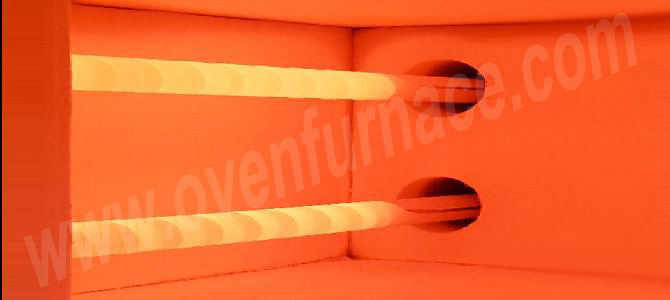-
Telephone:+0086-371-6376-8262Telephone:+0086-371-6376-8385
-
wechat:abcdefg
-
-
Email:ht@ovenfurnace.com


Silicon carbide SiC electric heating elements for element temperatures up to 1625°C, available in a wide variety of standard sizes and geometries, or in customized designs to meet the specific needs of various processes and equipment, high temperatue furnace.
Silicon carbide is a ceramic material with relatively high electrical conductivity when compared to other ceramics. The SiC heating elements are produced by pressing or extruding and then sintering.
Typical Silicon carbide heating elements are rods or tubes, with diameters between 0.5 and 3 inches and lengths from 1 to 10 feet. They have metalized ends for electrical connections, and they often have both connections at one end, with two helical slots which stop short of the other end, thus approximating a twisted hairpin form.
Typical SiC heating elements are rods or tubes, with diameters between 0.5 and 3 inches and lengths from 1 to 10 feet. They have metalized ends for electrical connections, and they often have both connections at one end, with two helical slots which stop short of the other end, thus approximating a twisted hairpin form.
Silicon carbide is widely used as an electrical heating element in high temperature electric furnace because of its excellent thermal and mechanical properties and its electrical resistivity. However, the increase of the electrical resistivity with running time and temperature limits the industrial development of the SiC heating elements.
The processes responsible for ageing are not well understood, but it is generally assumed that this phenomena is primarily associated with the oxidation. The present work is a review of the substantial effort that has been made to determine and understand the effects of oxidation with respect to the properties, performance and durability of various commercialized silicon carbide heating elements.
Silicon carbide heating elements connected in series and/or parallel will not dissipate equal amounts of power unless their resistances are identical. Therefore such elements should be replaced as a set. It is unlikely that these elements will age, or heat up, at the same rate, and therefore the life of the set may be reduced due to over-powering of one element. This problem can be avoided by providing a separate power controller for each SiC heating element.

